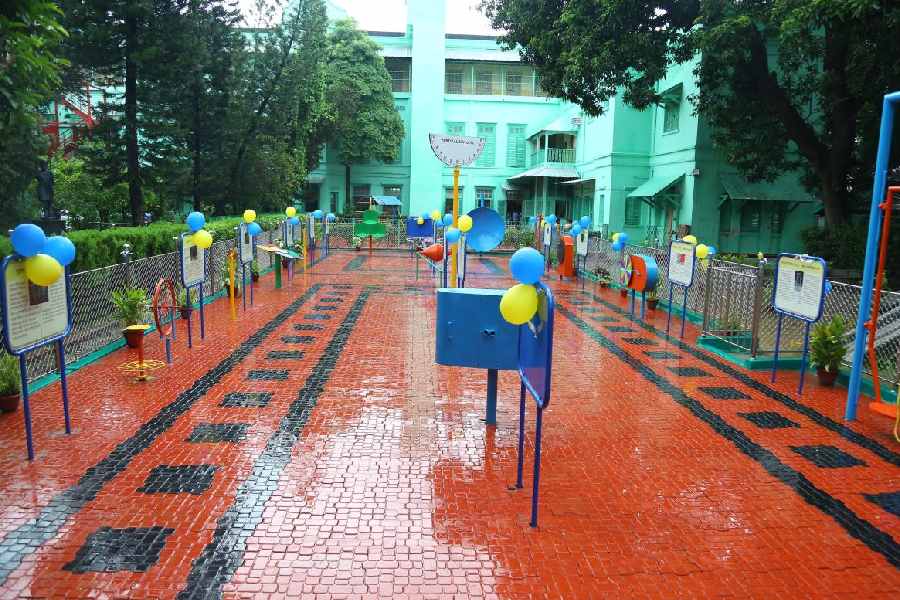Time for science & fun with magic


Enter the gates of St John’s Diocesan Girls’ H.S. School from the Sarat Bose end and the eyes rest on a brand new science park that the school has got made for its students.
Named after Bishop Robert Milman, a pioneer of girls’ education in India in the 19th century, the park is a fun space, full of interactive outdoor displays and models meant to encourage students to play with science and explore its magic out in the open.
“I had read how a prism refracts light. But it felt wonderful to actually see the seven colours of a rainbow through it,” said Pushpannita Datta of Class X as she got ready to showcase her experiment on light.
The prism is one of the several equipment that the newly set-up Bishop Robert Milman Science Park boasts of. More than 40 students of Classes VIII to XII got ready to explain various aspects of the park to a stream of guests, parents and educators at its inauguration on July 25. The innovative park has been developed by a Bangalore-based IT company that has installed similar models in several schools all over India.
The guests at the inauguration included Reverend Paritosh Canning, the bishop of the Calcutta diocese of the Church of North India, and astrophysicist Debiprosad Duari, among others.
“Now you can go and play to learn. You need not limit yourself to the classroom,” said Bishop Canning, encouraging students of the school to experiment and explore and have fun in the process. “If you have fun it will be easy for you to sit for exams as some concepts will be ingrained in you,” he said.
He added how the school is already mulling how to upgrade the science park.
Duari agreed as to how the park spelt an opportunity for the students. He spoke of a time when he was invited to the Vatican Observatory in Rome and got an opportunity to interact with Pope John Paul II and Father S.J. Coyne, director of Vatican Observatory. “Many feel that religion and science don’t get along. But that is wrong. Both can co-exist and better themselves. The important thing is not to stop asking questions. There is science behind everything you see,” said Duari, a fellow of the Royal Astronomical Society and International Astronomical Union. He encouraged the children to tinker and explore and embark on a fulfilling journey.
“Science is not about studying engineering and working in Information Technology. It is about identifying the joy of discovery,” he added, before being taken on a tour of the science park.
Some of the interactive equipment kept at the science park are a gyroscope, sundial, parabolic dish, Necker’s cube, Barton’s pendulum and an uphill cone. There are also musical pipes for students to study musical notes.
“I always wondered how a lift works. Finally, I got to explore the weight and pulley in the park and learn a basic lesson better,” said an excited Adrika Basu of Class VIII.
Principal Snigdha Gain said: "The park was a vision of Bishop Canning. He shared it with me four months ago. It was a big dream that we realised. It is our duty to protect the environment and maintain the balance of co-existence. We had science books in black and white, and it was sometimes difficult to visualise what we learnt. Then the schools got laboratories where students could experiment. Now the science park will help children explore.”